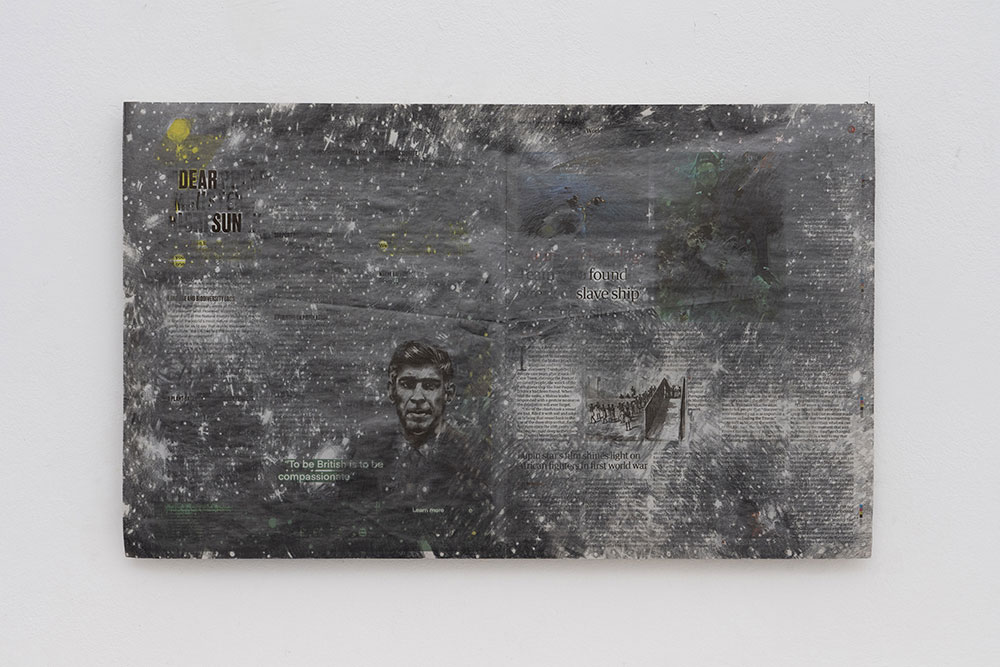
'Drawing on Newspaper' (2023) by Sumi Kanazawa in Installation view, Erase and See. The Daiwa Anglo-Japanese Foundation, 2023. Photo © 2023 Taihei Soejima.
[Last Chance] Gallery Tour: Erase and See by Sumi Kanazawa
- 18 January 2024
- 12:00pm – 1:00pm
- Daiwa Anglo-Japanese Foundation, 13 / 14 Cornwall Terrace, London NW1 4QP
- https://dajf.org.uk/event/last-chance-gallery-tour-erase-and-see-by-sumi-kanazawa
- +44 (0)20 7486 4348
- events@dajf.org.uk
- Tweet
Last chance to join us for a free lunchtime tour related to our exhibition, Erase and See by Sumi Kanazawa, led by Daiwa Anglo-Japanese Foundation staff. The tour will focus on a series of works titled, Drawings on Newspapers, and the concepts behind them, along with a new piece derived from these installations.
Kanazawa uses a black 10B pencil to obliterate printed words and images in newspapers, except for those that appeal to her, either for a reason or intuitively. The remaining content is thus excised from its context to weave new stories. For Kanazawa, the erasure of context is a liberating experience, pointing up the discrepancy between an individual’s sense of time and that regulated by society. We will explore Sumi’s artistic practice, ideas, and inspiration.
As the number of participants is limited, we urge you to sign up quickly.
About Sumi Kanazawa
Sumi Kanazawa was born in 1979 in Kobe City, Hyogo Prefecture, and now lives in Tokyo. She completed graduate school at Kyoto Seika University in 2005, studying under Saburō Muraoka. Major solo exhibitions include Keshite, miru [Erase and See] (Youkubo Art Space, 2018), and group exhibitions include Artist in FAS 2018 (Fujisawa City Art Space, 2018) and Beyond the Sun (Incheon Art Platform, South Korea). In 2021 she won the Grand Prix in the Contemporary Art Foundation’s CAFAA Awards. In 2022, she participated in the group exhibition Listen to the Sound of the Earth Turning: Our Wellbeing since the Pandemic at Mori Art Museum, Tokyo, Japan, which featured her large-scale installation Drawings on Newspapers. Sumi Kanazawa started to work in earnest on the Drawings on Newspapers series in 2017 when it became difficult for her to travel to create works on site after she became a mother. The sense of society that underlies Kanazawa’s works is inseparable from questions about her family environment and her identity as a third-generation Korean living in Japan. From this starting point she takes a panoramic overview of the world, creating works based on the disjunctions between individuals and collective issues.
